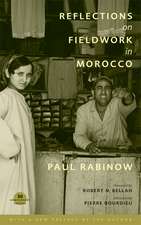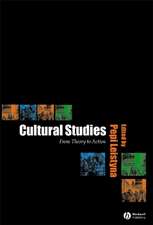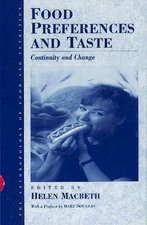Social Learning and Innovation in Contemporary Hunter-Gatherers: Evolutionary and Ethnographic Perspectives: Replacement of Neanderthals by Modern Humans Series
Editat de Hideaki Terashima, Barry S. Hewletten Limba Engleză Hardback – 2 noi 2016
| Toate formatele și edițiile | Preț | Express |
|---|---|---|
| Paperback (1) | 702.06 lei 38-44 zile | |
| Springer – 29 iun 2018 | 702.06 lei 38-44 zile | |
| Hardback (1) | 810.67 lei 3-5 săpt. | |
| Springer – 2 noi 2016 | 810.67 lei 3-5 săpt. |
Preț: 810.67 lei
Preț vechi: 988.63 lei
-18% Nou
Puncte Express: 1216
Preț estimativ în valută:
155.14€ • 161.37$ • 128.08£
155.14€ • 161.37$ • 128.08£
Carte disponibilă
Livrare economică 24 martie-07 aprilie
Preluare comenzi: 021 569.72.76
Specificații
ISBN-13: 9784431559955
ISBN-10: 4431559957
Pagini: 300
Ilustrații: XVIII, 318 p. 79 illus., 57 illus. in color.
Dimensiuni: 210 x 279 x 22 mm
Greutate: 1.27 kg
Ediția:1st ed. 2016
Editura: Springer
Colecția Springer
Seria Replacement of Neanderthals by Modern Humans Series
Locul publicării:Tokyo, Japan
ISBN-10: 4431559957
Pagini: 300
Ilustrații: XVIII, 318 p. 79 illus., 57 illus. in color.
Dimensiuni: 210 x 279 x 22 mm
Greutate: 1.27 kg
Ediția:1st ed. 2016
Editura: Springer
Colecția Springer
Seria Replacement of Neanderthals by Modern Humans Series
Locul publicării:Tokyo, Japan
Public țintă
ResearchCuprins
Social Learning and Innovation in Hunter-Gatherers.- A Cross-Cultural Analysis of Hunter-Gatherer Social Learning.- Teaching and Overimiation in Hunter-Gatherers.- A Multi-Stage Learning Model for Cultural Transmission: Evidence from Three Indigenous Societies.- To Share or Not to Share? Social Processes of Learning to Share Food among Hadza Hunter-Gatherer Children.- Learning to Spear Hunt among Ethiopian Chabu Adolescent Hunter-Gatherers.- Transmission of Body Decoration among the Baka Hunter-Gatherers.- Education and Learning During Social Situations among Central Kalahari San.- Constructing Social Learning in Interaction among the Baka Hunter-Gatherers.- Social and Epistemological Dimensions of Learning among Nayaka Hunter-Gatherers.- High Motivation and Low Gain: Food Procurement from Rainforest Foraging by Baka Hunter-Gatherer Children.- Play, Music, and Taboo in Reproduction of an Egalitarian Society.- Children’s Play and the Integration of Social and Individual Learning: A Cultural Niche Construction Perspective.- Evening Play: Acquainting Toddlers with Dangers and Fear and Yuendumu, Northern Territory.- Hunting Play among San Children: Imitation, Learning, and Play.- When Hunters Gather But Do not Hunt; Playing with the State in the Forest: Jarawa Children’s changing World.- Innovation and Social Learning among Chabu Adolescent Hunter-Gatherers of Ethiopia.- Variations in Shape, Local Classification, and the Establishment of a Chaine Operatore for Pot Making among Female Potters in Southwestern Ethiopia.- Innovation of Paintings and its Transmission: Case Studies from Aboriginal Art in Australia.- Early Social Cognitive Development in Baka Infants: Joint Attention, Behavior Control, Understanding of the Self Related to Others, Social Approaching, and Language Learning.- Learning in Collaborative Action Through the Art Works of Baka Hunter-Gatherer Children.- Hunter-Gatherers and Learning Nature.- Socio-Cultural Cultural of Positive Attitudes Towards Learning: Considering Differences in Learning Ability between Neanderthals and Modern Humans from Examining Inuit Children’s Learning Process.- Body Growth and Life History of Modern Humans and Neanderthals from the Perspective of Human Evolution.- Evolutionary Location of the Neanderthal between Chimpanzees and Modern Humans: A Working Memory, Theory of Mind and Brain Developmental, Piagetian Perspective.- Reflections on Hunter-Gatherer Social Learning and Innovation
Textul de pe ultima copertă
This is the first book to examine social learning and innovation in hunter–gatherers from around the world. More is known about social learning in chimpanzees and nonhuman primates than is known about social learning in hunter–gatherers, a way of life that characterized most of human history. The book describes diverse patterns of learning and teaching behaviors in contemporary hunter–gatherers from the perspectives of cultural anthropology, ecological anthropology, biological anthropology, and developmental psychology. The book addresses several theoretical issues including the learning hypothesis which suggests that the fate of Homo sapiens and Neanderthals in the last glacial period might have been due to the differences in learning ability. It has been unequivocally claimed that social learning is intrinsically important for human beings; however, the characteristics of human learning remain under a dense fog despite innumerable studies with children from urban–industrialcultures. Controversy continues on problems such as: do hunter–gatherers teach? If so, what types of teaching occur, who does it, how often, under what contexts, and so on. The book explores the most basic and intrinsic aspects of social learning as well as the foundation of innovative activities in everyday activities of contemporary hunter–gatherer people across the earth. The book examines how hunter-gatherer core values, such as gender and age egalitarianism and extensive sharing of food and childcare are transmitted and acquired by children. Chapters are grouped into five sections: 1) theoretical perspectives of learning in hunter–gatherers, 2) modes and processes of social learning in hunter–gatherers, 3) innovation and cumulative culture, 4) play and other cultural contexts of social learning and innovation, 5) biological contexts of learning and innovation. Ideas and concepts based on the data gathered through an intensive fieldwork by the authors will give much insight into the mechanisms and meanings of learning and education in modern humans.
Caracteristici
Is the first and only book on social learning in hunter–gatherers Employs multidisciplinary (biological and cultural anthropology, developmental psychology, education) theoretical and methodological approaches to understanding social learning and innovation in hunter–gatherers Emphasizes field-based studies of hunter–gatherers Integrates and utilizes field-based ethnography to address theoretical issues in archaeology and prehistory




















